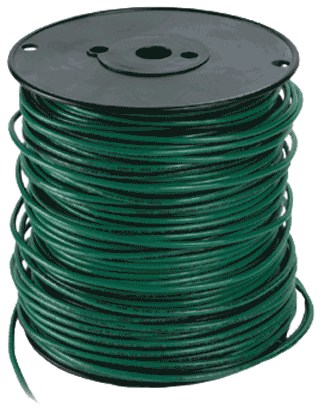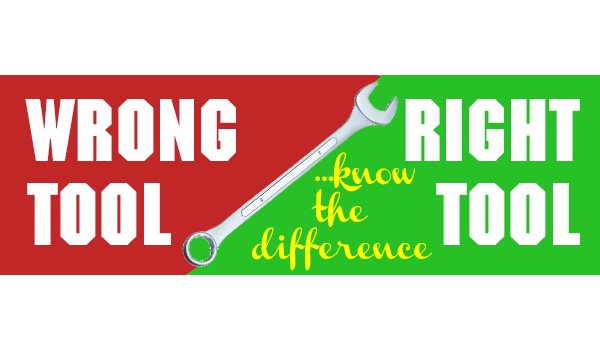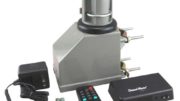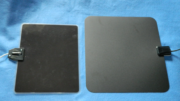Our “Wrong Tool / Right Tool” series, now in its 11th year, helps DIYers choose the best way to move forward with common projects.
Folks, you should be grounding anything and everything on your roof. If it’s metal, it will have a tendency to accumulate static electricity. That’s the first step toward a lightning strike, and a lightning strike is the very last thing you want to happen.
Grounding gives static electricity a way to dissipate harmlessly before it builds up enough for there to be a problem. The idea is simple: a wire runs from the metal objects on your roof down to a location in your yard. Some people choose to attach to an outdoor breaker box or to a water pipe, because those objects are already grounded. Your local city hall will have details on what you can legally do in order to ground your devices. From there, it’s up to you to choose the right tool for the job.
WRONG TOOL: Flat wire.
OK. So you’ve realized you have to ground anything that you put up on the roof. That’s great, really. Most people just go ahead, putting the antenna or dish on the roof without any sort of grounding. there are even plenty of installers who do this.
So you know where the cold water supply line is, and you know that it’s a good way of grounding an antenna. But you don’t have any ground wire… so you look around. Maybe the homeowner before you had an antenna up in the roof and there’s a bunch of old 300 ohm flat antenna wire up there. So you decide to use that, hey better than nothing, right?
Wrong.
The thin leads in 300 ohm antenna wire won’t help you one bit in the case of a serious electrical discharge. The copper will just melt, and you’ll be completely unprotected. Worst case scenario, they actually spread an electrical discharge inside your walls, where dust and other flammable materials may turn your home into a powder keg. Just don’t do it.
RIGHT TOOL: 10 gauge copper wire with green sheath

Yes it’s heavy. Yes it’s relatively expensive. But friends, this is how you run a ground wire. It should be a heavy-gauge wire designed to take a hit from thousands of volts of current. The green outer sheath tells the next homeowner that you planned ahead, and if you ever need an electrician, he’ll recognize the ground wire instantly.
Take the time to pick up some of this ground wire and you’ll be glad you did. After all, you’re grounding in order to keep your house safe, not just for fun. You’re grounding because it’s the right thing to do… and this is the right way to do it.
Get grounding supplies from Solid Signal
Solid Signal has the professional grade grounding supplies you’ll need. This is the stuff you won’t find at your local home store. Check out our great selection at SolidSignal.com and choose the parts you need! Not sure what’s best for your home? Call the experts at 888-233-7563 after checking with your local city hall about grounding ordinances. We’ll help you translate those rules into the parts and accessories you’ll need. We’re here during East Coast business hours. If it’s after hours, no problem! Fill out the form below. We’ll get back to you quickly!





